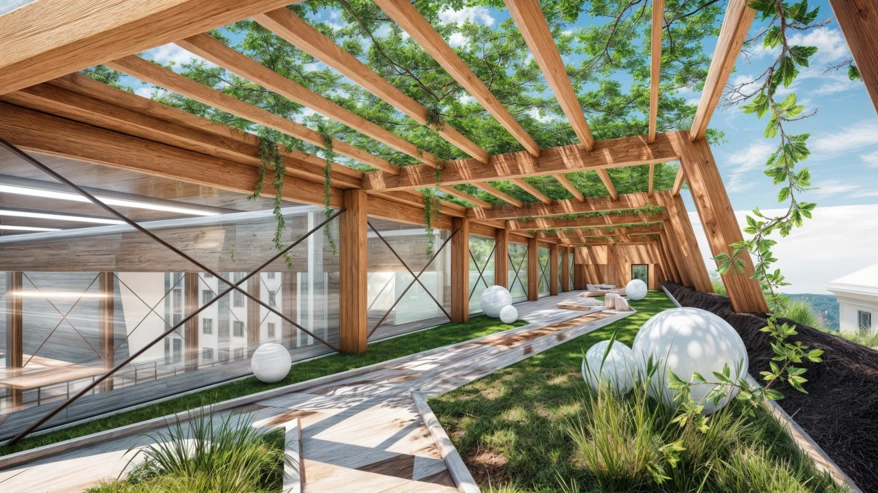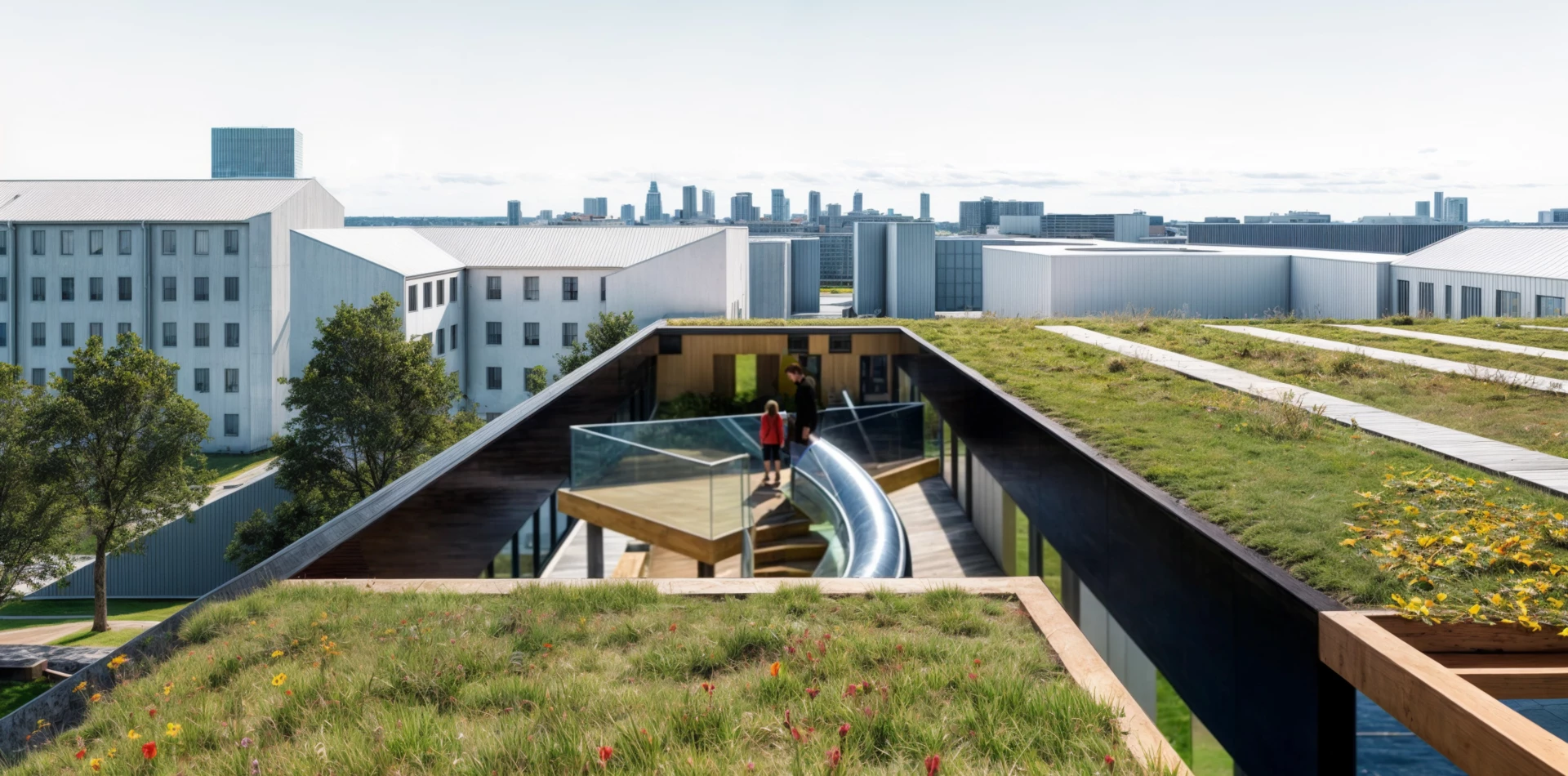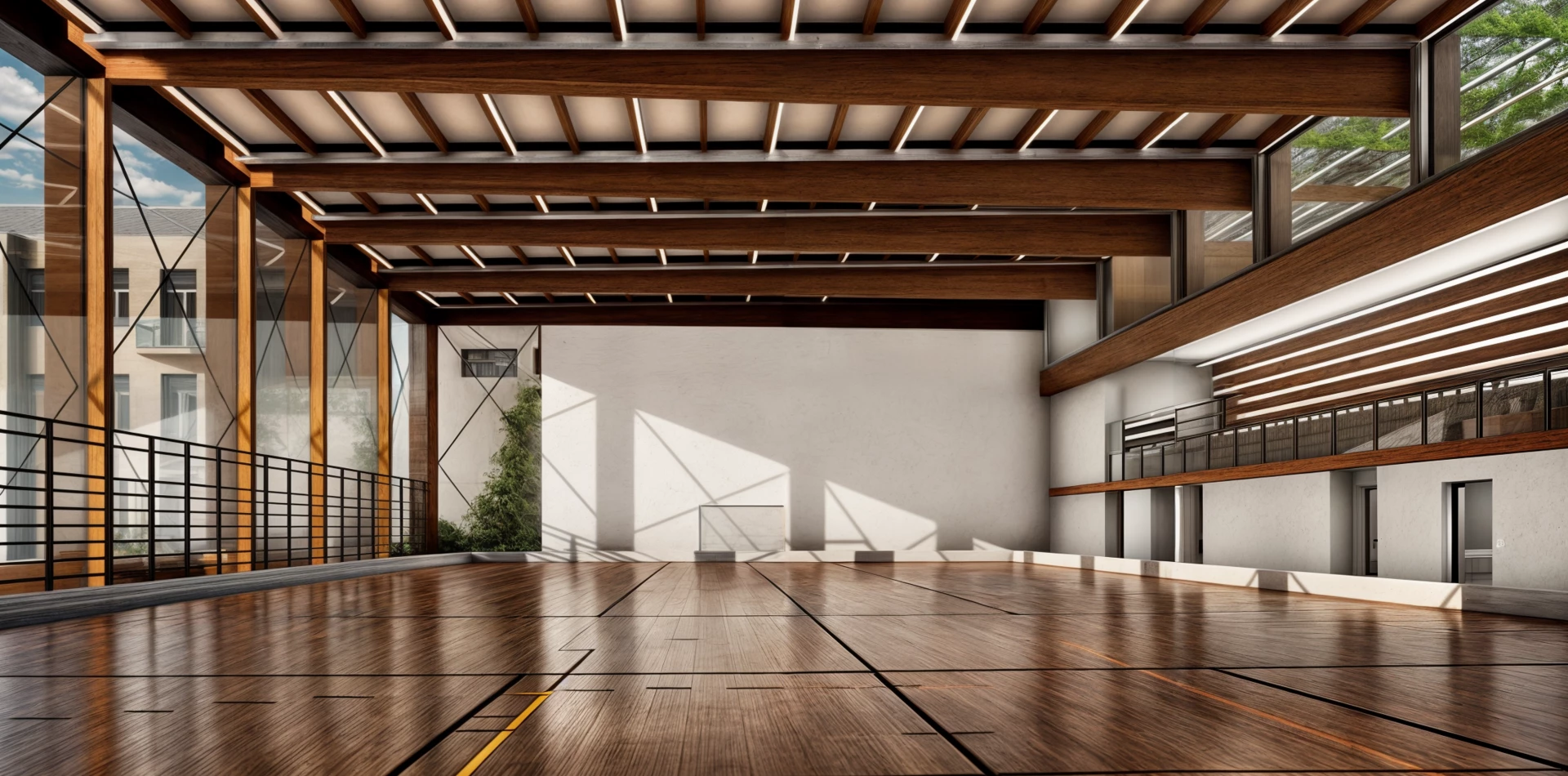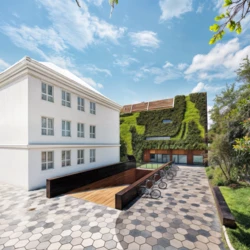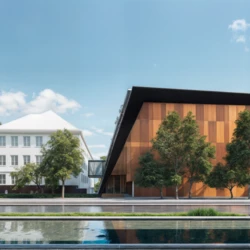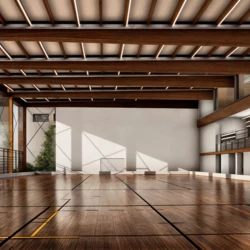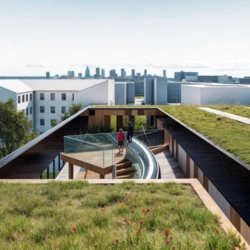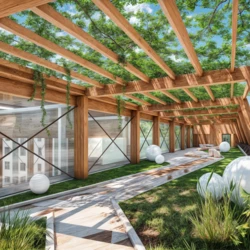The conceptual design envisions returning "stolen nature" by transforming the building into a vertical garden with a green roof, combining a sporting function with a natural microclimate and unique views. By using natural materials, greenery, and energy-efficient solutions, the facility becomes modern, ecological, and economical to maintain.
Contact with nature in the middle of the city
The site designated for the sports hall is located in a highly urbanized area, filled with multi-story buildings. The only green space in the area is the school yard, where this investment will be located. The conceptual design envisions returning stolen nature by transforming the sports hall building into a vertical garden structure connected to a green roof, which houses the necessary sports infrastructure. This solution will create a sense of contact with nature in the middle of a huge metropolis, significantly improve the local microclimate, and provide the hall with natural light and a unique view from the windows. A viewing point is also located on the roof, which is connected to a small slide. This solution enhances the attractiveness of the space and provides a unique attraction.
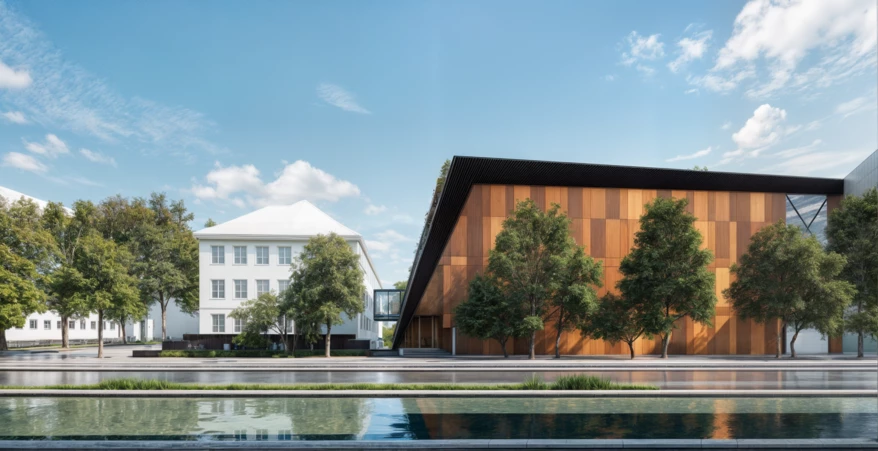
The use of natural materials such as wood in the design, combined with a façade whose colors evoke the warm tones of the earth, enhances the feeling of close contact with nature and becomes a breath of fresh air that is starting to be lacking in the area, while also blending in and composing with the existing greenery and architecture.
Thanks to the use of natural greenery and earthy tones, the school and surrounding area, in addition to its well-developed sports infrastructure, also retain a garden, which will enhance its appeal both now and in the future. The facility has also been equipped with modern, energy-efficient installations that allow for the efficient use of the complex and reduce maintenance costs. The use of plants such as mosses and sedums in the green roof makes it maintenance-free. The greenery also acts as an additional acoustic barrier and supports thermal insulation, reducing heat loss in winter.
